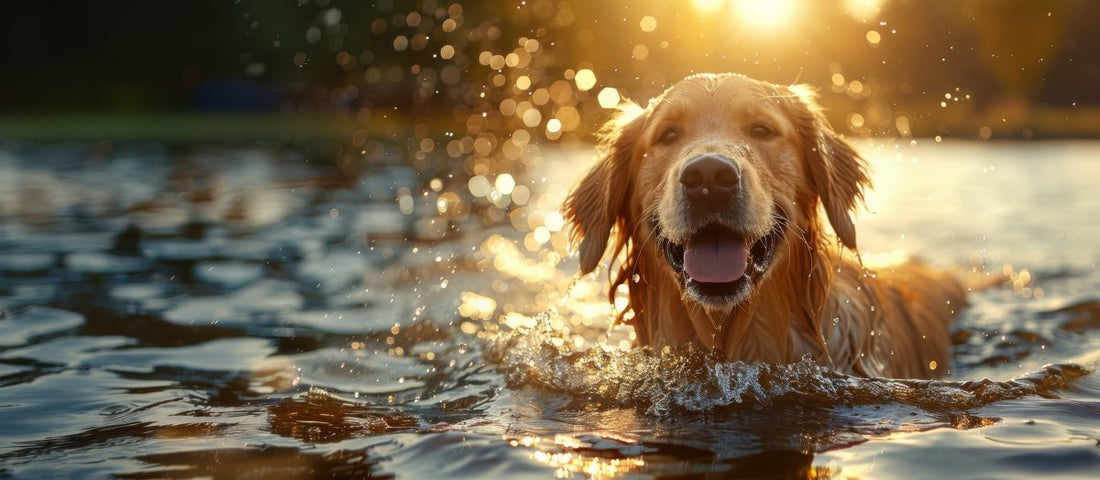Summer, sun, water—for many dogs, this is pure joy. Whether it's a lake, river, or sea: Splashing around together is fun, cools you off, and strengthens the bond between you and your four-legged friend.
To ensure that your trip is not only enjoyable but also safe, you should keep a few things in mind.
The right preparation for water fun
Before you set off, check the local conditions. Not every body of water is suitable for dogs. Find out if dogs are allowed there and check the water access. Steep banks or slippery rocks can be dangerous.
It is also practical to take a blanket or towel for your dog so that he can warm up and dry himself later.
Recognizing dangers in the water
Beware of currents
In rivers, canals, or the ocean with strong surf, even a good swimmer can drown. Currents are often difficult for dogs to assess—it's better to be safe than to risk a test.
Algal bloom in summer
Greenish, cloudy water or a musty smell could indicate blue-green algae. These are toxic and can be dangerous even in small amounts. If you suspect this, keep your dog away.
Water poisoning
Yes, dogs can also consume too much water – for example, through excessive retrieving. This dilutes the body's salt balance and can be life-threatening. Plan breaks so your dog doesn't drink and swallow continuously.
What exactly is a “water rod”?
Maybe you've experienced it before: Your dog swims enthusiastically, but the next day his tail hangs limply. This is often a sign of so-called water tail —a painful muscle strain at the base of the tail caused by cold water or overexertion.
It usually goes away on its own, but should be checked by a veterinarian.
Safety first – life jackets for dogs
A life jacket isn't just useful for insecure swimmers. Older dogs, dogs with joint problems, or dogs that cover long distances in the water also benefit from the additional buoyancy aid. It's practically mandatory at sea or on boat trips—especially if the dog needs to be pulled aboard in an emergency.
The right water toy
Choose floating toys that are easy to see—preferably in bright colors like orange, yellow, or red. This makes it easier for your dog to find them. In addition to classic balls, floating dummies or special water rings are also suitable. A small but serious tip: Only throw things into the water that won't sink—otherwise, you'll end up the one who goes swimming.
Seawater and salinity
A swim in the sea can be refreshing for dogs, but make sure your four-legged friend doesn't drink too much salt water. The high salt content can lead to diarrhea and vomiting. After bathing, rinse the fur and paws with clean water and a dog-friendly shampoo to remove any salt residue. This prevents skin irritation and also protects the pads.
After bathing
- Drying off: Especially in cooler or windy conditions.
- Ear care: Clean upright and floppy ears with ear cleaner and dry thoroughly to avoid infections.
- Offer fresh water: So that the dog does not drink too much lake or sea water.
- Check the coat: Look for ticks, dirt, or small injuries.
Conclusion: Safe water fun for you and your dog
A day at the water is the highlight of summer for many dogs. If you follow a few safety rules, watch out for potential hazards, and plan breaks, nothing will stand in the way of splashing around. This way, the outing will be enjoyable for both of you – and you'll return home feeling relaxed.



